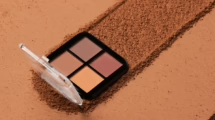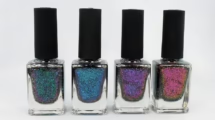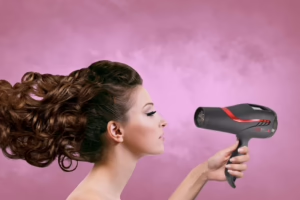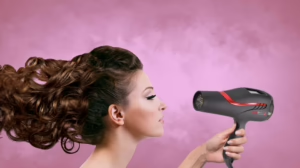Hair Today, Gone Tomorrow: The Art of the Perfect Trim
Introduction
Hair has been an integral part of human identity for millennia. From ancient civilizations to modern society, the way we style our hair reflects our culture, personality, and even social status. Haircuts, in particular, can be transformative, offering not just a change in appearance but a shift in self-perception. This article explores the intricacies of hair styling, focusing on the art of the perfect trim, its historical significance, modern techniques, and the psychology behind a perfect haircut.
The Historical Significance of Hair
Throughout history, hair has held profound cultural meanings. In ancient Egypt, for example, hair was a symbol of status. Nobles and royalty would often adorn themselves with elaborate hairstyles and wigs made from human hair, animal fur, or plant fibers. In contrast, slaves were often depicted with shaved heads as a sign of their subjugation.
In many cultures, hair symbolizes power and vitality. The biblical story of Samson illustrates the idea that long hair signifies strength and purity. On the other hand, many indigenous tribes have specific rituals surrounding the cutting of hair, often marking significant life changes, such as puberty or mourning. Each cut can symbolize a new beginning or an end to a particular phase of life.
The Psychology of Hair
The connection between hair and identity has psychological underpinnings. Research indicates that our hair influences our self-esteem and mental health. A study published in the International Journal of Psychology found that individuals often associate their self-worth with their hairstyle; a bad haircut can lead to feelings of inadequacy and anxiety, while a successful trim can boost confidence.
Furthermore, the act of getting a haircut can be therapeutic. There’s a reason why many people seek out salons not just for the service but also for the experience. Stylists often serve as confidants, offering a safe space for clients to express their thoughts. This is particularly notable in today’s world where mental health awareness is on the rise. The “hair salon therapy” phenomenon has gained traction, with many individuals finding solace in the simple act of cutting or styling hair.
Understanding the Perfect Trim
The Importance of Tailoring to Individual Needs
The definition of a “perfect trim” will vary greatly depending on individual hair types, textures, and personal styles. For example, what works splendidly for a person with thick, curly hair may not suit someone with fine, straight hair. A good stylist will consider factors such as facial shape, hair growth patterns, and lifestyle before advising on the best cut.
Factors to Consider:
-
Face Shape: A round face may benefit from layers that elongate the appearance of the face, while a square face may look balanced with soft, rounded cuts.
-
Hair Texture: Curly hair requires different techniques than straight hair. Dry cutting can sometimes give better results for textured hair, allowing the stylist to see the natural curl pattern.
-
Lifestyle: A busy professional may prefer a low-maintenance style, while someone with more time may opt for a more intricate look.
The Consultation Process
An essential step toward achieving the perfect trim involves a thorough consultation. During this time, the stylist should ask several key questions:
- What are your hair goals?
- What products do you currently use?
- How much time do you spend on your hair daily?
- Are there any specific styles or cuts you admire?
The more information shared during this stage, the better equipped the stylist will be to deliver a cut that satisfies both form and function.
Trusting the Stylist’s Expertise
While customer preferences should always be prioritized, it’s also crucial that clients trust their stylist’s expertise. A professional will often have insights regarding hair care, styles, and trends that may not be immediately apparent to the client. For instance, a stylist may recommend a specific cut that aligns with the individual’s hair health or growth patterns.
Techniques for a Professional Trim
Scissors vs. Razors
One of the primary decisions in achieving a perfect trim is choosing between scissors and razor cutting.
-
Scissors: This classic method provides precision and control. Stylists can make clean cuts that result in defined shapes and styles. Scissor cuts are excellent for all hair types and offer versatility in styling.
-
Razors: This technique is often used for texturizing hair, creating softer lines and movement. However, it’s crucial that this method is employed by an experienced stylist; improper use can lead to excessive fraying and damage to the hair cuticle.
Dry Cutting vs. Wet Cutting
The choice between dry cutting and wet cutting is another essential consideration.
-
Wet Cutting: This traditional method involves cutting hair while wet, which can provide a cohesive look but may not accurately show how hair will fall when it dries.
-
Dry Cutting: This modern approach allows stylists to see how the hair naturally falls and moves, making it easier to create a more personalized look. This method is particularly beneficial for those with waves or curls, as it ensures that the natural texture is respected.
The Aftercare: Maintaining the Trim
Achieving the perfect trim is just the beginning. Proper aftercare is essential to maintain that fresh-cut look.
At-Home Care Tips
-
Use Quality Products: Invest in high-quality shampoos and conditioners suited for your hair type, ensuring that you maintain the well-being of your hair post-trim.
-
Regular Trims: To keep the trim looking sharp, regular visits to the salon are essential. Depending on hair growth, a trim every 6–8 weeks is generally recommended.
-
Heat Protection: If you frequently use heating tools, applying a heat protectant can prevent damage and split ends.
-
Learn Styling Techniques: Ask your stylist for simple styling tips that you can incorporate into your daily routine to get the most out of your new trim.
The Future of Hair Trimming
As technology continues to evolve, we can expect significant advancements in hair care and trimming techniques. From virtual consultations to AI-driven hair analysis, the future of haircuts is becoming increasingly sophisticated.
Innovations in Hair Trimming Technology
-
Virtual Reality Consultations: Imagine being able to visualize different hairstyles in a virtual world before making a decision. VR technology is on the brink of transforming the consultation process.
-
AI Recommendations: Analytical tools powered by artificial intelligence could give precise recommendations based on facial recognition and historical trends in hair care.
-
Personalized Hair Care Products: Developments in biotechnology could lead to customized shampoos and treatments based on individual hair profiles, maximizing health and vibrancy.
The Cultural Shift: Inclusive Salons and Diverse Styles
In recent years, the hairdressing industry has seen a paradigm shift toward inclusivity. Salons are beginning to embrace all hair types and textures, recognizing that everyone deserves personalized care.
Representation Matters
The representation of diverse hairstyles in media has also played a critical role in this cultural evolution. Models and influencers showcasing various styles have encouraged salons to offer inclusive services. The importance of education on different hair textures cannot be overstated; stylist training programs are increasingly incorporating modules on the unique needs of textured hair.
Conclusion
In summation, the art of the perfect trim is a blend of science, creative expression, and psychological understanding. As we navigate through social, cultural, and technological changes, one thing remains true: hair is an ever-evolving aspect of personal identity.
Whether you’re seeking a dramatic change or just a simple refresh, the perfect trim has the potential to boost self-confidence and enhance personal style. So the next time you sit in the stylist’s chair, think of the history, technique, and care involved in that transformative moment. Because hair today might be gone tomorrow, but the confidence gained from a perfect trim lasts a lifetime.
Modern Footnotes
- International Journal of Psychology. (2022). The Influence of Hair on Self-Esteem and Body Image.
- Smith, L. A., & Johnson, R. T. (2021). Cultural Significance of Hair in Ancient Civilizations.
- Thompson, J. R., & Green, P. (2023). Psychological Aspects of Hair Care: A Review of the Literature.
- National Hairdressing Association. (2023). Best Practices for Modern Haircuts.
- Davis, A. (2021). The Evolution of Hair: From History to Modern Trends.
- Adams, T. (2022). The Cultural Shift Towards Inclusivity in Salon Services.
By understanding the nuances of hair and the emotional connections we have with it, individuals can reclaim their narrative through haircuts and trims. After all, in a world where change is constant, hair may symbolize both who we are today and who we aspire to become tomorrow.


























Add Comment